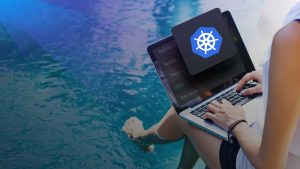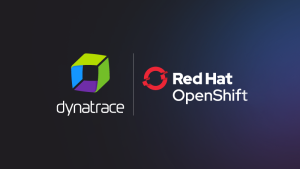Welcome to the second edition of the Dynatrace Partner Spotlight series. With the Red Hat Summit 2019 just around the corner, this month’s featured partner is the world’s leading provider of open source software solutions: Red Hat.
He started selling software out of his closet. You will not believe what happened next.
At the beginning of the 90’s Bob Young was just starting to get his new software business off the ground out of his closet in Connecticut. After a failed attempt to sell his previous business, unemployed, with three kids and a big mortgage, this time he really needed to be creative. Fortunately, he already had some experience in the computer business. On the software sales market dominated by Oracle, Microsoft, and IBM, Young spotted a gap: no one provided software with the source code open and a license to modify and customize it to fit the user’s needs. So, he started selling open source Linux and Unix operating systems with his famous sales pitch “You wouldn’t buy a car with the hood welded shut”.
Around the same time, Marc Ewing was studying computer science at Carnegie Mellon University in Pittsburgh. Known to wear a red hat as he walked between classes, Marc was a cheerful geek who often helped fellow students in the computer lab. “If you need help, look for the guy in the red hat” – they said. To pursue his hacking hobby and still be able to pay the rent, he began to create his own version of Linux and selling copies of it. The name he chose for his product was – unsurprisingly – “Red Hat Linux”, and soon became famous as a stable and easy-to-use operating system.
Bob Young and Marc Ewing met at a tech conference. Soon thereafter, in 1995, they became one company under the name “Red Hat” and started operating out of Raleigh, North Carolina.
The rest is history.
The complexities of today’s world are too big for just one company.
It was around 2011 that PaaS software projects started as open instead of closed – think of OpenShift (2011), Cloud Foundry (2011), or Kubernetes (2014). Today, these platforms are literally the source of innovation in every area of technology, changing the way enterprises are developing their internal and external services. What makes these solutions great? The fact that they come with a wide ecosystem of cutting-edge programmers.
Companies like Microsoft, Google, and IBM realized that the complexities of today’s world are too big for just one company. Sharing works much better than protectionism. Developing dynamic cores in the open, and then building on it allows everyone to move faster and be more innovative. So, major IT companies started to adopt the “Red Hat thinking” and became major contributors to open source software projects. And let’s remember also that two of the largest players did some serious shopping on the open source market last year: do you remember when Microsoft acquired GitHub for $7.5 billion and IBM acquired RedHat for $34 billion?
Because of the tremendous amount of contribution, enterprise open source has become genuinely better software than proprietary counterparts.
Those with the red hat leading the innovation nevertheless.
Who else would lead the open source movement if not the ones who started it? Red Hat became leaders in many different open source communities (Linux, Kubernetes, Ansible, OpenStack) and started to bring them to market in products like Red Hat Enterprise Linux, Red Hat OpenShift Container Platform, and Red Hat Ansible. Today, these are super-relevant, innovative technologies that liberate resources for growth and prepare customers for the future of IT.
From a Dynatrace perspective the two most relevant solutions are Red Hat OpenShift and Red Hat Ansible.
OpenShift & Dynatrace: master your containers and microservices like a pro.
No wonder Red Hat OpenShift became a hit: based on Docker and Kubernetes, it’s a powerful container platform that makes developing, deploying, and running containerized applications conveniently and at scale.
However, building applications based on containers and microservices introduces a significant level of complexity. Containers come and go, and instead of functionality updates every six to nine months, independent teams can now make updates to microservices as frequently as needed. But this complexity doesn’t just affect the infrastructure–it applies to the applications themselves, making it very difficult to understand why a business transaction failed, or why end users react the ways they do.
This is why Dynatrace is uniquely situated. As Red Hat OpenShift Primed partner, Dynatrace solves this complexity problem across the entire Red Hat OpenShift platform and any underlying hybrid-cloud enterprise infrastructure with an all-in-one solution. Its unique capabilities include:
- Auto-discovery: Dynatrace Smartscape® technology automatically detects and displays all the components and dependencies that comprise the OpenShift environment, providing users with a real-time blueprint of their application architecture.
- Auto-baselining: Dynatrace uses AI to understand the difference between desirable and unwanted behaviors emerging from each component. It can also dive deep into the code to uncover methods being invoked and how they contribute to the overall performance of the system.
- Auto-problem analysis: Dynatrace rapidly identifies failures, component involvement, and root causes. Machine learning helps evaluate issues, determine if it warrants an alert, and provide valuable insights for better business decisions.
Ansible & Dynatrace: Automate DevOps to scale beyond your wildest dreams.
Red Hat Ansible is another wonder child of the Red Hat family. In case you were wondering: the word “ansible” was a contraction of “answerable” and it was coined by Ursula K. Le Guin in her 1966 novel Rocannon’s World. There, it referred to a device that allows its users to receive answers to their messages over interstellar distances.
In the Red Hat vocabulary however, it’s a powerful open source tool that automates multi-platform cloud provisioning, configuration management, application deployment and many other IT processes.
DevOps teams use Ansible to describe their applications and underlying infrastructure. But they can also repurpose the same Ansible roles and playbooks to take corrective actions when necessary. Dynatrace provides the answers DevOps teams need to quickly identify performance issues, but also works with Ansible to fix them.
Remediation of the issue can be automated by Ansible, following the pre-defined processes, at the application layer, infrastructure layer, or anywhere in an IT environment. The Dynatrace Ansible integration allows companies to roll their own playbook for integrating insightful end-to-end monitoring into every part of their enterprise application in under 60 seconds.
By integrating the automated root cause problem data provided by Dynatrace with the IT automation capabilities of Red Hat Ansible, teams can create a mechanism for auto-remediation of performance issues–and deliver increased benefits for less effort.
Come on, meet us!
Now you know the basics about the Red Hat & Dynatrace partnership. If you want to meet us in person, come visit us at Red Hat Summit from May 7 to 9 in Boston. From autonomous operations to self-healing applications – I promise you’ll learn a lot about how to make more informed business decisions with Red Hat and Dynatrace.






Looking for answers?
Start a new discussion or ask for help in our Q&A forum.
Go to forum